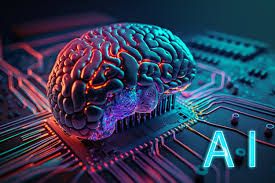Trending
Therapy without a human: Can AI help you heal?

6 min read | Updated on June 02, 2025, 15:18 IST
SUMMARY
As more people struggle with anxiety, burnout and emotional distress, AI tools like ChatGPT are emerging as unconventional mental health companions. We explore the rise of AI therapy and its benefits, like 24/7 availability, affordability and anonymity. We also examine its limitations, including the lack of human empathy and ethical concerns. While experts are divided, one thing is clear: AI is transforming how we approach mental wellness.

AI_therapy
Sameer, 33, Head of Marketing at a leading startup, was down in the dumps. He had been dealing with anxiety and burnout for many years. He tried therapy - not once or twice, but with around 10 different therapists. Nothing helped. Taking time out for sessions in between hectic schedules, paying exorbitant fees, and the tedious and somewhat painful process of sharing the same story again and again had started getting exhausting.
“Then one day, at around 2 am, I had enough. While lying in bed, I opened ChatGPT on my phone and started writing,” shares Sameer. “At first, my use of ChatGPT was driven by curiosity, particularly around its emotional intelligence. I wanted to see how well it could understand and respond to human emotions. What surprised me wasn’t just the cohesive answers, but the empathy I felt in them.’’
Since then, Sameer made ChatGPT his digital friend… his thought partner. “Whenever I feel angry or disturbed, I just write. When I am confused, AI gives me clarity. I feel like someone is there who really understands me.”
Sameer is not alone. There is a growing number of people across age groups, genders, communities and nationalities who are opting for AI therapy. It is no longer just a personal choice but a rapidly spreading global trend.
A study published in Harvard Business Review in April 2025 titled “How People Are Really Using Gen AI in 2025” revealed that generative AI is now being used the most for therapy/companionship. Last year, it was ranked number 2 after generating ideas.
The study clearly distinguishes between therapy and companionship. Therapy involves structured support and guidance to process psychological challenges, while companionship covers social and emotional connections.
Before we get to that, it is important to understand the factors behind this growing craze:
24×7 availability: Getting a therapist appointment could take quite a while, sometimes weeks. In contrast, AI is always online, always ready.
Judgment-free zone: You can share without shame or hesitation, as the one who is listening to you (or reading, in the case of AI) is not a human! It is just a machine.
Cost-effective: Let’s admit it. Therapy can be a costly affair! The price factor often acts as a deterrent for many. But with AI, the help is usually free or at least affordable.
Comfort and anonymity: AI allows a person to bare their heart out anonymously without stressing over the attached social stigma.
Riding the digital therapy wave, the internet is seeing a tsunami of AI-based therapy tools apart from ChatGPT. Some popular examples are:
Wysa: An Indian-origin mental health chatbot that offers a combo of both AI and a human coach.
Replika: An AI companion that one can befriend and have emotional conversations with.
Youper: An AI-based app that uses CBT (Cognitive Behavioural Therapy) techniques.
Woebot: A chatbot based on Stanford research, scientifically designed to offer therapeutic conversations.
The idea of digital and distance therapy came into being during the 2020 COVID-19 era. The struggles of the pandemic led to a mammoth-scale mental health crisis. Globally, the prevalence of anxiety and depression rose by 25% in 2020, as per the WHO. People battling isolation, grief due to the death of loved ones, job loss, etc., fall victim to mental health challenges. But with no in-person meetings allowed, the only resort was online consultations. Therapists and patients began holding sessions on video calls, eliminating the need for face-to-face conversations. What we are seeing now is just an extension of what was normalised during the pandemic.
Just like traditional therapy, the answer to this can be subjective. However, a recent study by Dartmouth College, USA, gives some perspective. It tested an AI-based therapy chatbot with 106 participants dealing with major depressive disorder, generalised anxiety disorder or eating disorders. The users were made to interact with the therapy chatbot on a smartphone for about a month. The result?
People diagnosed with depression felt a 51% reduction in symptoms on average. Those with generalised anxiety showed an average reduction in symptoms of 31%. 19% witnessed an improvement in body-image concerns.
Well, experts are divided. Those in favour say that AI is helping therapy shed its ‘made-for-the-privileged’ tag by making it accessible to all. It can be a good support system, especially for those who live in remote areas or who don’t have the means to afford traditional therapy. Some feel it’s like journaling on steroids. AI provides a safe space for people to express and explore freely, with no fear of being judged.
But another section of experts vehemently disagrees. They argue that therapy is not just a process to give solutions; it is also about establishing a bond based on trust. AI can’t replicate empathy, human connection and non-verbal cues. It can only offer answers from its recycled database. AI isn’t equipped to handle severe cases, they should seek professional, human help.
Here, the 7-38-55 rule also comes into play. Often attributed to psychologist Albert Mehrabian, this rule suggests that when people have a face-to-face conversation, only 7% is conveyed through the spoken words, 55% is through body language and 38% through tone of voice.
For Priya, 32, a marketing professional, this is not an issue. ‘’I won’t mind the lack of human connection. We are doing everything online these days, be it shopping, reading and even dating; then why not therapy? At least there is no fear of being judged.’’
But ethical concerns also stand. There are issues related to data privacy, over-dependence and even emotional manipulation. One question will always persist: Is AI emotionally safe?
Is AI a new-age therapy or a mediocre but easy substitute for human touch? There is no doubt that AI therapy is booming. Suggestions like ‘talk to AI’ are getting normalised. Emotional wellness is now being democratised and becoming more accessible. But can it replicate a therapist’s empathy-filled gaze that touches a heart? Probably not.
Sure, AI can be a non-judgmental listener, but it doesn’t offer the connection only possible between two humans. Machines can’t do it. Not in the foreseeable future, at least.
Maybe the future belongs to hybrid therapy, where AI can act as an assistant, but the human touch will always be imperative.
Yes, AI can listen and understand, but sometimes, what we need most is someone to simply hold our hand.
By signing up you agree to Upstox’s Terms & Conditions
About The Author
Next Story

